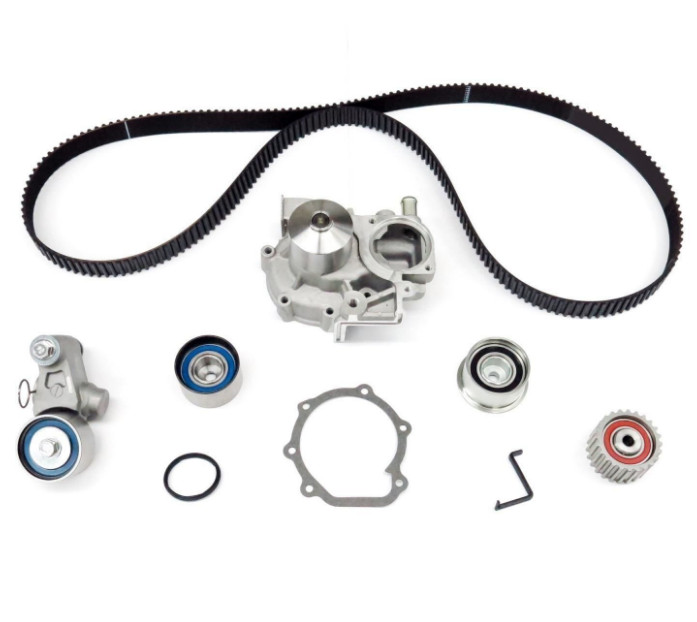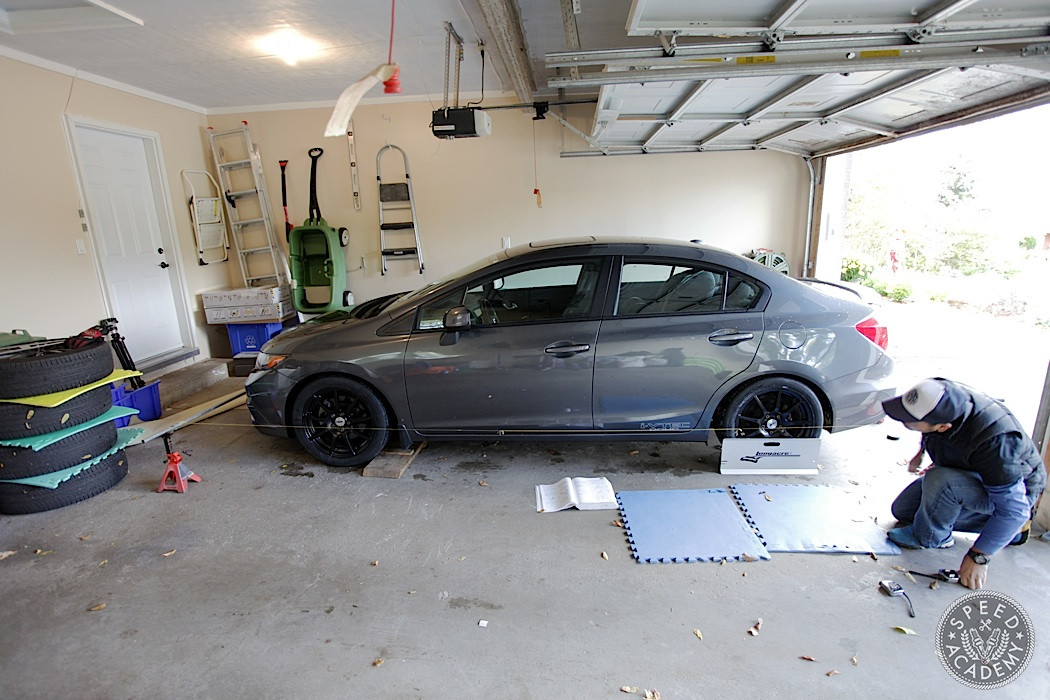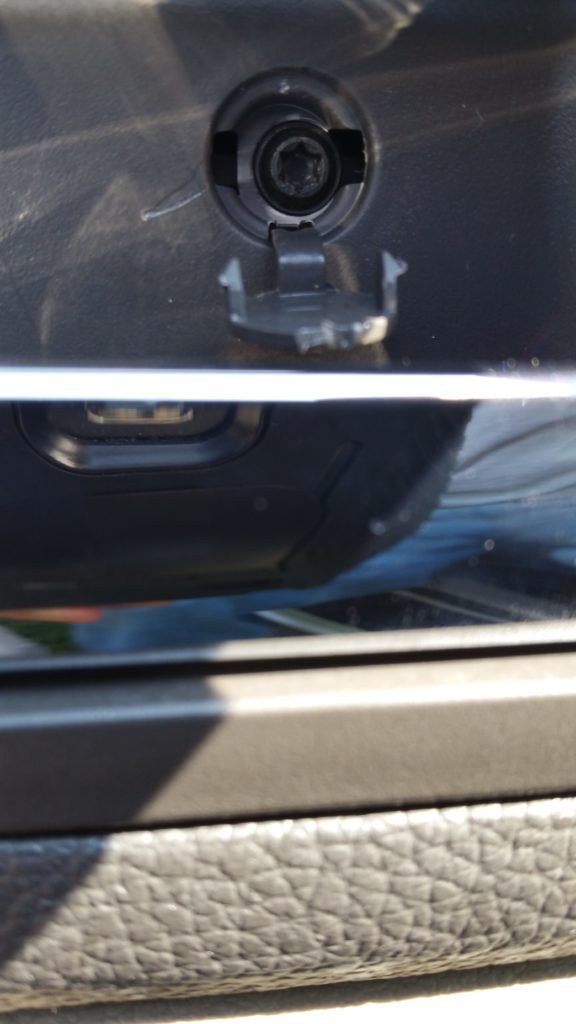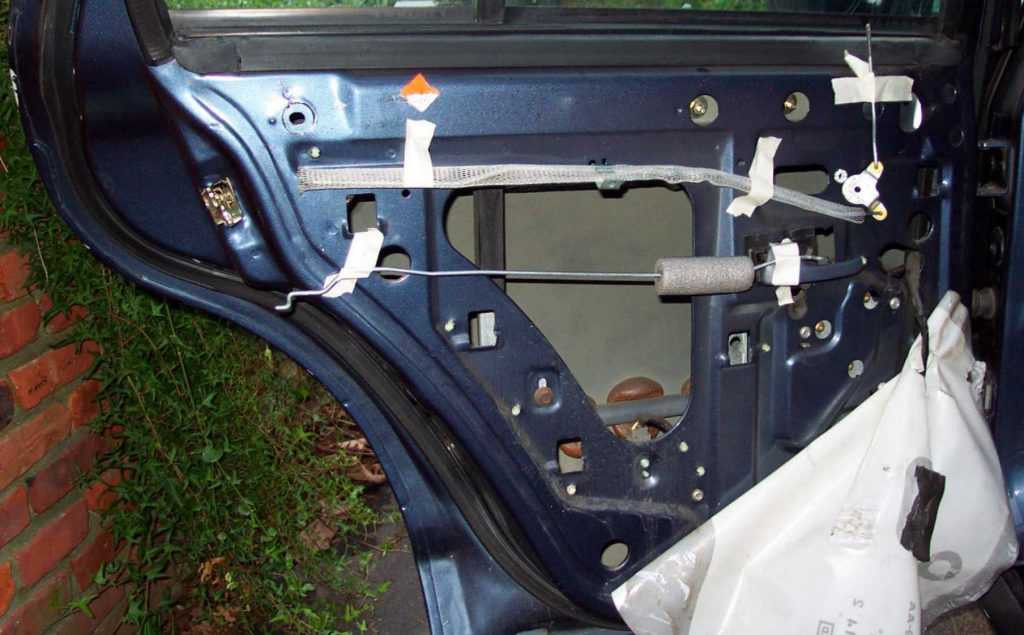How Much Is It To Fix Bumper On Car?

Is it time to resolve that mix of frustration and confusion caused by a damaged car bumper? If you are dealing with a minor dent or significant damage to your rear bumper or front bumper, CARDIAGTECH.NET is here to help. It is not only about the car’s look; it’s also about your peace of mind and safety.
In this guide, we’ll explore the costs of bumper repair and replacement. From understanding bumper damage types to exploring cost-effective solutions, we’ve got the information you need, including insights into the cost of fixing a bumper. Let’s turn that frown upside down, starting with a comprehensive look at what it takes to restore your bumper.
1. Fixing Vs. Replacing a Bumper: Knowing Your Options
Bumpers play a vital role in vehicle safety, engineered to absorb impact during collisions, so they often bear the brunt of damage. Whether it’s a plastic bumper or one with aluminum reinforcement, understanding the options is key.
Deciding whether to fix or replace a damaged bumper depends significantly on the damage extent and its impact on vehicle safety. Below, we explore when each option, whether bumper repair or bumper replacement, is most appropriate.
 How much to fix a car bumper with minor damage
How much to fix a car bumper with minor damage
1.1. When Repair is a Good Option
Bumper repair is typically the preferred option for minor damage where the bumper’s structural integrity is still intact. Here are scenarios where repair is advisable:
- Minor Dents and Scratches: Small dents or scratches on your car bumper don’t compromise the bumper’s functionality and can often be repaired with techniques like paintless dent repair (PDR). According to the Insurance Institute for Highway Safety (IIHS), addressing minor damage promptly can prevent further deterioration.
- Superficial Cracks: If the cracks on your plastic bumper aren’t deep and don’t affect the underlying structure, repair options like plastic filler, sanding, and repainting are viable.
- Cost Considerations: For older vehicles, such as a used Toyota or Honda, repairing even somewhat extensive damage might be more economical than a full replacement. Choosing repair can save you money while maintaining your vehicle’s appearance and safety.
1.2. When Replacement is a Good Option
Bumper replacement is often recommended in cases of extensive damage. Here’s when a new bumper makes sense:
- Severe Damage: Deep cracks, large dents, or holes in the car bumper can compromise its structural integrity, necessitating a replacement. This ensures the vehicle meets safety standards.
- Multiple Damaged Areas: If the bumper has suffered damage in several places, a new bumper might be more cost-effective and safer. Repairing multiple areas can be more labor-intensive and costly than replacing the entire bumper.
- Age and Condition of Bumper: An older bumper, especially on luxury vehicles or SUVs, that has endured previous repairs might be better off replaced. Over time, bumpers can degrade, making them less effective in a collision.
- Technological Components Affected: Modern bumpers often house components like fog lights and sensors. If these are damaged, replacing the entire bumper assembly might be necessary. This ensures all safety features function correctly.
2. Different Types of Bumper Damage
Bumpers are prone to various types of damage, often due to their position on the car. Here’s a breakdown of common bumper damages with brief explanations:
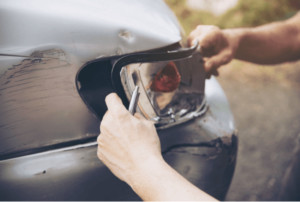 Cost considerations for repairing car bumper damage
Cost considerations for repairing car bumper damage
- Dents: Usually caused by low-speed collisions or bumping into objects. These are indentations in the bumper material, varying in size.
- Scratches: Can happen from brushes with other vehicles, walls, or even vegetation. They range from surface-level marks to deeper grooves.
- Cracks: More severe than scratches, typically resulting from harder impacts. Cracks can compromise the structural integrity of the bumper.
- Scuffs and Scrapes: Often the result of grazing another surface, scuffs may leave paint residue or superficial damage on the bumper.
- Holes and Punctures: These occur from sharp or pointed impacts and can be serious, sometimes requiring a complete bumper replacement.
- Peeling Paint: Caused by exposure to elements, minor collisions, or poor paint jobs, leading to the paint peeling off the bumper.
3. Average Cost of Car Bumper Repair
On average, repairing a car bumper can cost anywhere from $150 to $600. The table below outlines the costs associated with different types of damage:
| Type of Damage | Repair Needed | Average Cost |
|---|---|---|
| Minor Dent | Dent Removal | $150 – $250 |
| Scratch | Paint Touch-Up | $100 – $300 |
| Crack | Plastic Welding and Reshaping | $250 – $500 |
| Major Dent | Panel Beating and Repainting | $350 – $600 |
3.1. Cost-Influencing Factors
Several additional factors can influence the cost of bumper repairs beyond the type of damage and repair needed:
- Car Make and Model: Luxury or foreign cars may require specific parts or custom paint that are more expensive and harder to source, driving up costs.
- Labor Rates: Rates vary by location and shop type. Specialized shops or urban areas often charge more, and complex repairs (like welding and reshaping) require more labor time, further increasing the cost.
- Geographic Location: Costs for materials and labor can vary by region. Remote locations may incur extra shipping fees for parts, and environmental regulations on paint can add to the cost.
- Material and Part Availability: Some bumper materials, especially for newer or luxury models, can be rare and costly to obtain, raising repair costs if specific replacements are necessary.
4. Bumper Replacement Cost
Sometimes, replacement is more feasible than repair. The cost for bumper replacement ranges between $500 to $1,500, varying with car types and models. Below is a table showing average prices for different cars:
| Car Type | Average Replacement Cost |
|---|---|
| Economy Car | $500 – $700 |
| Mid-Range Car | $700 – $1,000 |
| Luxury Car | $1,000 – $1,500 |
5. How to Know What Kind of Repair You Need
Determining the right repair approach for your car bumper can be challenging. Whether it’s a minor scratch on your front bumper or extensive damage to your rear bumper, here’s a simple checklist to help you assess the bumper damage and decide the best course of action:
 Choosing the right repair for car bumper
Choosing the right repair for car bumper
- Inspect the Damage: Carefully examine the bumper for dents, scratches, cracks, or any other visible damage. This initial inspection is key, whether it’s a plastic bumper or one with a bumper cover.
- Assess the Severity: Small dents and light scratches might only need minor repairs like paintless dent repair, while large cracks or holes may require more extensive work or even a bumper replacement.
- Check for Hidden Damage: Damage isn’t always surface level. If the bumper feels loose or there’s damage to the car’s body near the bumper, it might indicate deeper issues, possibly affecting other car parts like the grille or fog lights.
- Consider Safety and Functionality: If the damage might affect the vehicle’s safety, such as interfering with sensors or lights, professional assessment at an auto body shop is necessary.
- Professional Assessment: For complex or severe damage, or if you’re unsure, consult with a reputable repair shop. They can provide a detailed evaluation using specialized tools and advise on whether a simple repair or a new bumper is needed.
6. Insurance and Your Bumper
When considering whether to file an insurance claim for bumper repair or replacement, it’s crucial to understand the potential impact on your insurance premiums. Here are key points to consider:
- Cost of Repair vs. Deductible: Compare the bumper repair cost to your deductible. If the repair cost for your damaged bumper is close to or less than your deductible, paying out of pocket might be more cost-effective.
- Nature of the Accident: If you were at fault, filing a claim could lead to an increase in your car insurance premiums. However, for no-fault accidents, especially if the other party’s insurance is covering the costs, your premiums should not be affected.
- Frequency of Claims: Filing multiple claims, even for minor damage, can lead to higher premiums. Your insurance company will consider your claim history.
- Policy Terms: Understand your insurance coverage, including aspects like collision repair coverage and whether you have accident forgiveness, which can influence your decision.
- Long-Term Cost Consideration: Weigh the long-term cost of increased premiums against the immediate bumper replacement cost or repair expenses.
- Claim History and Loyalty: A long, claim-free history with your insurance company might influence their decision on premium adjustments.
7. Choosing the Right Tools and Equipment for Bumper Repair
For auto repair professionals and DIY enthusiasts, having the right tools and equipment is essential for efficient and effective bumper repairs. CARDIAGTECH.NET offers a wide range of high-quality tools designed to meet the demands of any bumper repair job. Here’s a look at some essential items:
7.1. Essential Hand Tools
- Socket Sets: A comprehensive socket set is crucial for removing and installing bumper components. Look for sets with a variety of sizes to handle different vehicle models.
- Wrenches: Both standard and torque wrenches are necessary for tightening bolts to the manufacturer’s specifications, ensuring a secure fit.
- Screwdrivers: A set of Phillips and flathead screwdrivers in various sizes is essential for removing screws and fasteners.
- Pliers: Different types of pliers, such as needle-nose and slip-joint pliers, are useful for gripping, bending, and cutting during the repair process.
- Trim Removal Tools: These tools help remove interior and exterior trim pieces without causing damage, making it easier to access the bumper.
7.2. Power Tools
- Heat Gun: A heat gun is invaluable for reshaping plastic bumpers. It allows you to soften the plastic and mold it back to its original shape.
- Sander: Sanders are essential for smoothing out rough surfaces after repairs. Orbital and dual-action sanders provide the best results.
- Welding Equipment: For repairing cracks in plastic bumpers, a plastic welder is indispensable. It melts and fuses the plastic together, creating a strong and durable repair.
- Grinder: A grinder can be used to remove rust, paint, and other surface contaminants before making repairs.
7.3. Diagnostic Tools
- OBD-II Scanner: Modern bumpers often house sensors and other electronic components. An OBD-II scanner can help diagnose any issues with these systems after a repair.
- Multimeter: A multimeter is useful for testing electrical circuits and ensuring that all components are functioning correctly.
7.4. Safety Equipment
- Safety Glasses: Protecting your eyes from debris and chemicals is crucial.
- Gloves: Wear gloves to protect your hands from sharp edges, chemicals, and other hazards.
- Respirator: When sanding or painting, a respirator is essential to protect your lungs from harmful particles and fumes.
7.5. Consumables
- Sandpaper: A variety of sandpaper grits is necessary for preparing surfaces for painting and smoothing out imperfections.
- Body Filler: Body filler is used to fill in dents and imperfections, creating a smooth and even surface.
- Primer: Primer helps the paint adhere to the bumper and provides a uniform base coat.
- Paint: Use high-quality automotive paint that matches the vehicle’s color.
- Clear Coat: A clear coat protects the paint and gives it a glossy finish.
7.6. Why Choose CARDIAGTECH.NET for Your Tools?
Investing in high-quality tools from CARDIAGTECH.NET ensures that you have the right equipment for any bumper repair job. Our tools are designed for durability, precision, and ease of use, helping you achieve professional results every time. Whether you’re a seasoned auto repair professional or a DIY enthusiast, CARDIAGTECH.NET has the tools you need to get the job done right.
8. Advanced Techniques for Bumper Repair
In addition to basic repair methods, several advanced techniques can restore bumpers to their original condition. These techniques often require specialized tools and expertise, but they can provide superior results.
8.1. Paintless Dent Repair (PDR)
PDR is a method of removing minor dents without affecting the paint finish. Specially designed tools are used to gently massage the metal back into its original shape. PDR is ideal for small dents caused by door dings, hail, or minor impacts.
8.2. Plastic Welding
Plastic welding is used to repair cracks and breaks in plastic bumpers. A plastic welder melts and fuses the plastic together, creating a strong and durable repair. This technique is particularly effective for thermoplastic bumpers.
8.3. Bumper Resurfacing
Bumper resurfacing involves sanding down the bumper to remove imperfections and then applying a new layer of coating. This technique can restore the bumper’s original texture and appearance.
8.4. Color Matching
Achieving a perfect color match is essential for a seamless repair. Automotive paint suppliers use sophisticated color-matching systems to create paint that matches the vehicle’s original color. This ensures that the repaired area blends in seamlessly with the rest of the bumper.
8.5. Blending Techniques
Blending is a technique used to blend the repaired area with the surrounding paint. This involves gradually fading the new paint into the old paint, creating a smooth and seamless transition.
8.6. Clear Coat Application
A clear coat is applied over the paint to protect it from UV rays, scratches, and other damage. The clear coat also gives the paint a glossy finish. Proper clear coat application is essential for a durable and attractive repair.
9. Maintaining Your Bumper After Repair
After repairing or replacing your bumper, taking steps to maintain it will help prolong its life and keep it looking its best.
9.1. Regular Cleaning
Wash your bumper regularly with soap and water to remove dirt, grime, and other contaminants. This will help prevent damage and keep the paint looking fresh.
9.2. Waxing
Waxing your bumper provides a protective layer that helps repel water, dirt, and UV rays. Waxing should be done every few months to maintain the bumper’s appearance.
9.3. Touch-Up Paint
Keep a bottle of touch-up paint on hand to repair minor scratches and chips. Applying touch-up paint promptly can prevent rust and further damage.
9.4. Protective Films
Consider applying a clear protective film to your bumper. These films provide a barrier against scratches, chips, and other damage.
9.5. Avoid Harsh Chemicals
Avoid using harsh chemicals or abrasive cleaners on your bumper. These can damage the paint and clear coat.
9.6. Parking Smart
Park your car in areas where it is less likely to be hit or scratched. Avoid parking too close to other vehicles and be mindful of shopping carts and other potential hazards.
10. Tips for Finding the Best Repair Shop
Choosing the right repair shop can make all the difference in the quality and longevity of your bumper repair. Here are some tips for finding the best shop:
10.1. Check Reviews and Ratings
Read online reviews and ratings to get an idea of the shop’s reputation. Look for shops with consistently positive reviews and high ratings.
10.2. Ask for Referrals
Ask friends, family, and colleagues for referrals. Personal recommendations can be a great way to find a trustworthy and reliable repair shop.
10.3. Check for Certifications
Look for shops that are certified by organizations such as ASE (Automotive Service Excellence). Certifications indicate that the shop’s technicians have the training and expertise to perform high-quality repairs.
10.4. Get Multiple Estimates
Get estimates from multiple shops before making a decision. This will help you compare prices and services and find the best deal.
10.5. Inquire About Warranties
Ask about the shop’s warranty policy. A good shop will offer a warranty on their work, giving you peace of mind.
10.6. Visit the Shop
Visit the shop in person to assess its cleanliness, organization, and professionalism. A well-maintained shop is more likely to provide high-quality repairs.
10.7. Ask Questions
Don’t hesitate to ask questions about the repair process, the materials used, and the shop’s qualifications. A reputable shop will be happy to answer your questions and address any concerns you may have.
11. How to Save Money on Bumper Repairs
Bumper repairs can be costly, but there are several ways to save money without sacrificing quality.
11.1. Get Multiple Estimates
Getting estimates from multiple shops allows you to compare prices and negotiate for a better deal.
11.2. Consider DIY Repairs
If the damage is minor, consider doing the repairs yourself. Many DIY repair kits are available for small dents, scratches, and chips.
11.3. Use Aftermarket Parts
Aftermarket parts are often less expensive than OEM (Original Equipment Manufacturer) parts. However, be sure to choose high-quality aftermarket parts that meet or exceed OEM standards.
11.4. Shop Around for Insurance
If you’re filing an insurance claim, shop around for the best insurance rates. Different insurance companies offer different rates, so it pays to compare.
11.5. Maintain Your Bumper
Regular maintenance can prevent minor damage from becoming major problems. Washing, waxing, and applying touch-up paint can help prolong the life of your bumper and avoid costly repairs.
11.6. Look for Discounts and Coupons
Many repair shops offer discounts and coupons. Check their websites or social media pages for special offers.
11.7. Negotiate
Don’t be afraid to negotiate with the repair shop. You may be able to get a lower price by negotiating.
12. Understanding the Impact of Bumper Damage on Vehicle Safety
Bumper damage can affect more than just your vehicle’s appearance. It can also compromise its safety.
12.1. Structural Integrity
Bumpers are designed to absorb impact in a collision. Damage to the bumper can reduce its ability to protect the vehicle and its occupants.
12.2. Sensor Functionality
Modern bumpers often house sensors for parking assist, collision warning, and other safety systems. Damage to the bumper can affect the functionality of these sensors, reducing the vehicle’s safety.
12.3. Airbag Deployment
In some vehicles, the bumper is connected to the airbag system. Damage to the bumper can affect the airbag’s deployment, potentially increasing the risk of injury in a collision.
12.4. Headlight Alignment
Bumper damage can affect the alignment of the headlights, reducing visibility and increasing the risk of accidents, especially at night.
12.5. Overall Safety
Even minor bumper damage can affect the vehicle’s overall safety. It’s important to have any damage repaired promptly to ensure that your vehicle is safe to drive.
13. The Future of Bumper Technology
Bumper technology is constantly evolving, with new materials, designs, and features being developed to improve vehicle safety and performance.
13.1. Advanced Materials
New materials such as carbon fiber and high-strength plastics are being used to create bumpers that are lighter, stronger, and more durable.
13.2. Integrated Sensors
Bumpers are increasingly being integrated with sensors for parking assist, collision warning, and other safety systems. These sensors help drivers avoid accidents and improve overall safety.
13.3. Energy Absorption
New bumper designs are being developed to improve energy absorption in a collision. These designs help reduce the impact force on the vehicle and its occupants.
13.4. Self-Repairing Bumpers
Researchers are developing self-repairing bumpers that can automatically repair minor damage. These bumpers use special materials that can heal themselves, reducing the need for costly repairs.
13.5. Customizable Bumpers
New technologies are making it possible to customize bumpers with different colors, designs, and features. This allows drivers to personalize their vehicles and express their individuality.
14. Addressing Customer Challenges with CARDIAGTECH.NET
At CARDIAGTECH.NET, we understand the challenges faced by auto repair professionals and DIY enthusiasts. Our goal is to provide solutions that enhance efficiency, reduce repair time, and improve the overall quality of work.
14.1. Physical Demands
We offer ergonomic tools and equipment that reduce physical strain and improve comfort. Our lightweight and easy-to-use tools help technicians work more efficiently without tiring quickly.
14.2. Exposure to Chemicals
We provide safety equipment such as gloves, respirators, and eye protection to minimize exposure to harmful chemicals. Our products meet the highest safety standards, ensuring the well-being of our customers.
14.3. Keeping Up with Technology
We offer the latest diagnostic tools and equipment to help technicians stay up-to-date with the latest automotive technology. Our products are designed to be user-friendly and provide accurate and reliable results.
14.4. Time Constraints
We provide tools and equipment that help reduce repair time and improve efficiency. Our products are designed to be fast, accurate, and easy to use, allowing technicians to complete repairs quickly and effectively.
14.5. Competition
We offer high-quality tools and equipment that help our customers stand out from the competition. Our products are designed to be durable, reliable, and provide professional results.
14.6. Finding the Right Tools
We offer a wide range of tools and equipment to meet the needs of any bumper repair job. Our knowledgeable staff can help you find the right tools for your specific needs and budget.
Ready to elevate your auto repair capabilities? Contact CARDIAGTECH.NET today at +1 (641) 206-8880 or visit our website CARDIAGTECH.NET. Let us help you enhance your efficiency, precision, and safety with our top-of-the-line tools. We are located at 276 Reock St, City of Orange, NJ 07050, United States. Let us help you take your auto repair business to the next level.
15. Frequently Asked Questions (FAQs) About Bumper Repair
-
How much does it typically cost to fix a bumper?
The average cost to fix a bumper ranges from $150 to $600, depending on the damage type and the repair needed.
-
Is it better to repair or replace a damaged bumper?
It depends on the extent of the damage. Minor dents and scratches can be repaired, while severe cracks or holes may require replacement.
-
Will filing an insurance claim for bumper repair affect my premiums?
It depends on the accident’s nature and your policy terms. Filing a claim for at-fault accidents may increase premiums.
-
What are the key factors that influence bumper repair costs?
Car make and model, labor rates, geographic location, and material availability all influence bumper repair costs.
-
Can I repair a bumper myself, or should I hire a professional?
Minor damage can be repaired DIY, but complex damage should be handled by a professional for safety and quality.
-
How can I find a reputable auto body shop for bumper repair?
Check reviews, ask for referrals, and look for certifications to find a reputable auto body shop.
-
What is paintless dent repair (PDR), and when is it appropriate?
PDR removes minor dents without affecting the paint finish and is suitable for small dents from door dings or hail.
-
What safety precautions should I take when repairing a bumper?
Wear safety glasses, gloves, and a respirator to protect yourself from debris, chemicals, and fumes.
-
How can I maintain my bumper after repair to prolong its life?
Regular cleaning, waxing, and touch-up paint can help prolong the life of your bumper.
-
What are some common types of bumper damage?
Common types include dents, scratches, cracks, scuffs, holes, and peeling paint.
16. Conclusion
Dealing with bumper damage, whether a small scratch or a significant collision, requires careful attention and expertise. By understanding the types of damage, repair options, and associated costs, you can make informed decisions to restore your vehicle to its best condition.
Remember, having the right tools and equipment is essential for efficient and effective bumper repairs. CARDIAGTECH.NET offers a wide range of high-quality tools designed to meet the demands of any bumper repair job. From essential hand tools to advanced diagnostic equipment, we have everything you need to get the job done right.
Investing in high-quality tools ensures you can achieve professional results every time. Whether you’re a seasoned auto repair professional or a DIY enthusiast, CARDIAGTECH.NET has the tools you need to get the job done right.



